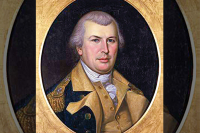The art of choosing the next book
Of late, we’ve been considering books. The feedback (mostly email) from readers to recent columns regarding books in general, book shelving strategies, bookplates, home libraries, favorite books, and so on, has been instructive. Before we move on to this week’s assignment (“How do we go about discovering the next book we’re going to read?”) here’s some of what my bookish correspondents are up to.
As previously mentioned, I heard from a woman who doesn’t require a book shelving strategy because she doesn’t shelve her books, having “given up on that foolishness more than 20 years ago.” Her home in Atlanta is apparently awash in a sea of 2,500 or so volumes, amongst which she and her three cats make their way. Her multiple copies of Gone With the Wind, she advised me most recently, are “very carefully stacked.”
A woman in Lake Junaluska wrote a lovely note about bookplates that I haven’t responded to as yet. But I will.
A well-organized gentleman dispatched (by snail mail) a list (three handwritten, single-spaced yellow pages) that warmed my heart. Therein, he enumerated the subject matter in each of his nine (A-I) bookcases situated, respectively: (1) in the “Living Room,” four bookcases, seven subject areas (novels, books about Indians, music, etc.), 11 sub-categories (edible/medicinal plants, Smoky Mountains, William Bartram, etc.), and two sub-sub-categories; (2) in the “Kitchen,” one bookcase, one subject area (American History) and five subcategories (French and Indian War, War of 1812, etc.); (3) in the “Hallway,” one bookcase, one subject area (music) and five sub-categories (opera, biographies of musicians, etc); (4) in the “Bed Room,” two bookcases and random shelves, with miscellaneous subject areas (sports, mysteries, poetry, transcendentalism, etc.); and (5) in the “Bathroom,” one bookcase, four subject areas (natural history, trail guides, animals, and books about the Appalachian Trail). All’s right with this world when a man’s books are well-organized.
Last week, I picked The Odyssey as the book I’d want if I could have but one book in my home library. Some picks by readers: the Bible (by a landslide), anything by Jane Austen, Walden, a one-volume edition of Shakespeare’s complete works, The Divine Comedy, Don Quixote, Chaucer, and Gene Stratton Porter’s A Girl of the Limberlost.
Now we get to “How do we go about discovering the next book we’re going to read?” — a serious question. When things are going well, it seems there’s no end to the books in hand or on your reading list. But in the blink of an eye, you can go into a slump. You’re not reading well (it’s a skill that fades with disuse) and you don’t know where your next book is coming from. What to do?
Related Items
Book reviews. At times, when I can keep up with them, I subscribe to as many book review publications on the national and regional levels as I can afford (not more than five). Aside from whatever leads I might pick up, I enjoy reading reviews in and of themselves. They are an art form of sorts, at which the British excel. In this country, Larry McMurtry is skilled at informal overviews and book talk; James Wood, a reviewer for the New Yorker who was raised in England, is more formal, more of a traditional critic. And it must be noted that, when he’s on his game, Gary Carden is as good a book reviewer as there is on any level.
Blurbs. I read them carefully. If the recently-deceased detective fiction author Robert Parker (creator of Spenser and Hawk) wrote a blurb praising another mystery author’s prose style, you could bank on it. James Dickey, you couldn’t trust. If asked, he would have written a blurb praising a chainsaw manual.
Writing blurbs is also an art form of sorts. They are difficult because so much has to be packed into so little space. I can’t write them. Several months ago, Renea Winchester — a Swain County native who lives in Atlanta — asked me to read the typescript of her new book, In the Garden with Billy: Lessons About Life, Love, and Tomatoes, and write a blurb. It’s a terrific book. The best thing I’ve read in quite a while. I got carried away. Renea was understandably bewildered – but still gracious – when she received, as an email attachment, a 1,000-word blurb. What she’s doing with it, I’m afraid to ask.
Word of mouth. The best bet. I won’t have any interest in your politics or problems, but if our paths should ever cross, it won’t be long before I ask, “By the way, what are you reading?” I will listen carefully to what you say and, if something you mention sounds likely, I’ll make a note.
George Ellison wrote the biographical introductions for the reissues of two Appalachian classics: Horace Kephart’s Our Southern Highlanders and James Mooney’s History, Myths, and Sacred Formulas of the Cherokees. In June 2005, a selection of his Back Then columns was published by The History Press in Charleston as Mountain Passages: Natural and Cultural History of Western North Carolina and the Great Smoky Mountains. Readers can contact him at P.O. Box 1262, Bryson City, N.C., 28713, or at This email address is being protected from spambots. You need JavaScript enabled to view it..









